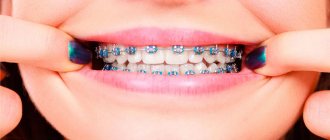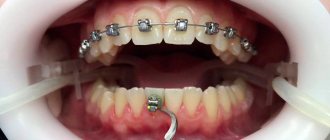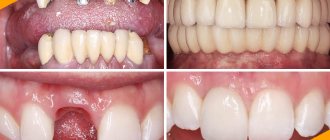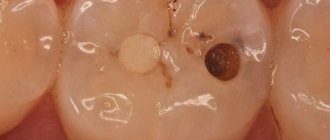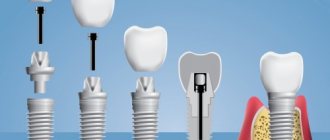Everything you would like to know about correcting your bite and straightening your teeth with braces.
Let's be honest: in modern realities, a beautiful smile is the norm, and it is necessary to get rid of dental imperfections. But, having set such a goal, it is desirable to have reliable information about existing methods and upcoming tests. We tried to collect in one article all the most important things about braces in order to save you from having to look for answers on your own on the Internet, where the truth is mixed with myths and advertising fluff.
Important! In the article, prices are indicated for St. Petersburg and the Leningrad region.
How are braces different from aligners?
This question worries many: is it possible to pay more, but get by wearing transparent removable aligners? The truth is that nice aligners can only cope with minor problems (for example, with one tooth that has grown incorrectly), but only fixed structures - those same “ugly braces” - can create an orthodontic load to shift the dentition.
As for cap-aligners, to achieve the effect, it is recommended to wear them at least 22 hours a day, removing them only during meals. As practice shows, a person often violates such rules by being distracted, forgetting, or simply allowing himself some indulgence. Strictly speaking, aligners are not intended to correct bites, and if they are positioned as such on the clinic’s website, it is better to turn to other specialists.
And the financial point: you will have to pay not more for the aligners, but much more, because during the treatment period they need to be changed at least 15 times (and sometimes much more), so the average minimum cost of correction with the help of aligners should be considered an amount of about 250- 300 thousand rubles.
#4 Braces are expensive
Let's not deny this fact. Especially if you plan to install expensive options, such as self-regulating sapphire systems. If beauty does not play a big role, then you can opt for metal braces. They perform the same function and are no different in efficiency.
The period of wearing braces is quite long and you can pay in installments. Monthly payments will be small and will not affect the family budget.
Installing and wearing braces: does it hurt?
When installing braces, the vast majority of patients do not experience any noticeable pain, but discomfort certainly appears, and you will have to get used to the braces - for some faster, for others longer, on average - 1-2 days. The exception is, perhaps, people with a very low pain threshold or with increased impressionability - it is from them that the myths about the pain of installing and wearing braces come.
In fact, sometimes there is irritation of the mucous membranes of the lips and cheeks. To solve this problem, a special wax is used, which the doctor will definitely suggest after installation.
Adaptation.
The length of the adaptation period takes 3-14 days - it all depends on the chosen design, following the dentist’s advice and the individual characteristics of the child. This time is the most difficult, as the teeth get used to the load, acquire some mobility and begin to change their position, trying to take the correct place in the bite. The patient feels severe discomfort and pain. You can reduce discomfort by adjusting the menu towards soft foods and taking prescribed sedatives.
I’ll take off my braces, a couple of years will pass, and my teeth will return to their place... is this true?
But this is true - but from the practice of past years! Now, after removing braces, the dentition is secured using a special non-removable retainer apparatus; previously this was not always done - hence the accumulated complaints. Today, orthodontists are required to install such a device.
A retainer is a thin wire that is installed on the inside of the front teeth and prevents them from moving apart. And this is for the rest of your life, but you shouldn’t worry: the delay is imperceptible, those around you don’t see it, and if it breaks, it’s easy to fix—just don’t delay your visit to the doctor.
Another problem is more pressing: sometimes, after straightening the dentition, previously hidden aesthetic defects (for example, different lengths of teeth) become noticeable. In this case, you will really have to resort to restoration or buy expensive veneers.
Important! The orthodontist must notice such defects and warn the patient before starting treatment.
How long does braces treatment last?
The length of treatment with braces is determined by several factors:
- the severity of the dental anomaly;
- the age of the patient, which determines the rate of metabolic processes in his body;
- the type of braces chosen and the accuracy of their installation on the teeth;
- professionalism of an orthodontist.
Adults should prepare themselves for one and a half to two years of serious work. Although during the treatment process, a doctor who monitors and controls the process can shorten or extend the period of wearing braces.
Experts note that most often patients who initially had vague ideas about its duration and the features that they will encounter are disappointed and dissatisfied with the treatment process. In a month, braces can move teeth no more than 1 mm. Therefore, it is so important to understand the monthly dynamics of the orthodontic process and be patient, and not just tune in to a positive result - a favorable smile that significantly improves the quality of life.
Patients should take an interest not only in photos before and after braces , but also in intermediate images. Monthly photos reflect well the results of treatment, although the patient himself sometimes gets the impression that the position of the teeth does not change at all.
Do braces damage enamel and lead to caries?
No, the tight fit of the braces completely eliminates the penetration of food debris and microbes into the tooth; Dental enamel glue used in practice is harmless, moreover, it contains the useful element fluorine. The brace-lock even protects the tooth in a certain way.
But improper care of braces is really fraught with trouble: oral hygiene after installation of an orthopedic structure requires more attention and responsibility due to the increased accumulation of plaque. And where there is plaque, there is caries!
Can adults get braces to correct their bite?
Anyone can correct a malocclusion, regardless of age. But in an adult, this process takes longer than in children, because skeletal growth has already stopped and hard bones are more difficult to form.
In addition, some oral health conditions may delay the installation of braces. For example, caries, periodontal disease, endocrine diseases.
Sometimes the effect of treatment is influenced by the presence of crowns and bridges. The treatment period starts from 1.5 years.
Is it necessary to use additional products to clean braces?
On forums (and sometimes in the recommendations of “experts”!) there are numerous additional products that supposedly make oral hygiene easier in the presence of braces (rinses, ultrasonic brushes, etc.)
In fact, with a responsible approach, it is quite possible to get by with three basic tools (toothbrush, dental floss, brush). In this case, you should not rely on someone else’s opinion. The quality of care will be assessed by a doctor who conducts regular examinations, and he will also recommend additional remedies, if necessary.
How to brush your teeth with braces?
This is where a traditional toothbrush and toothpaste don't serve their purpose. Therefore, you will need to buy a special orthodontic brush, brushes and floss from the pharmacy. You can also use an oral irrigator if you wish.
This way you can effectively clean your teeth and the area around the locks. Teeth should be thoroughly brushed after each meal, because food debris is deposited on braces, which contributes to the development of caries and does not look aesthetically pleasing. We have repeatedly encountered patients whose teeth are more well-groomed than those of a person without braces.
Is there a need to give up your usual food?
As a rule, when installing a brace system, the doctor will actually announce “forbidden” foods, and this list looks quite depressing (cookies, chips, seeds/nuts, crackers, chewing gum, pizza, chocolate bars, etc. - everything that can stick to the structure , creating conditions for the proliferation of microbes, or damaging it). But in this case, the doctor’s recommendations should be approached in a differentiated manner: there is a clear reinsurance here, the only thing that is actually required from the patient is caution.
Contraindications
There is a fairly large list of contraindications for installing the design for children.
They are not installed in the following conditions:
- age under eleven years;
- inability to ensure sufficient oral hygiene;
- oncological diseases;
- mental illness (oligophrenia, schizophrenia);
- blood pathology;
- tuberculosis;
- diseases of the heart and blood vessels;
- endocrine pathologies;
- extensive caries;
- gingivitis;
- osteoporosis
- HIV.
Most of these contraindications are absolute; under no circumstances should structures be installed. Others are considered relative; when inflammatory processes are cured, corrective systems can be installed.
Is it true that sapphire braces are the best?
Sapphire braces are much more expensive than iron braces, but their advantages do not lie in the effectiveness of treatment. Moreover, in reliability they are inferior to metal ones. But on the teeth, such brace systems look much more aesthetically pleasing, since transparent brace locks are almost invisible.
Let us clarify: the precious natural stone sapphire has nothing to do with the production of such briquettes; we are talking about artificially grown crystals.
By the way, there are also cheaper transparent braces - ceramic (much more expensive than metal ones, but not as expensive as sapphires) and plastic designs. Only the former are too fragile and unstable in relation to food dyes (can lead to yellowing of teeth), and the latter are intended only for short-term use.
#2 Braces are very noticeable
To some extent this is true. This is important for public people who have to communicate a lot and often. But today you can select systems that are practically invisible. For such cases, the following options can be recommended:
- Lingual system. When in use, the braces are not visible. But there are nuances here. The system can only correct minor defects, and at first there may be problems with diction;
- Ceramic or sapphire braces. It’s worth saying right away that the price of the system is higher than the metal version. When using ceramic and sapphire braces, you should be careful and avoid hard products.
How much do simple metal braces cost?
The remarkable cheapness of hardware is just a myth supported by some clinics. Indeed, by indicating the cost of one element of the braces system, they create the illusion of affordable treatment, but the patient should understand that the treatment process involves paying for braces, dental materials, multiple visits to the doctor and various procedures, including removal of the system at the end of treatment - and all this will cost at a very decent amount.
On average, the price of a course of treatment in an ordinary case (healthy teeth, simple defect) is 150-170 thousand rubles. (and this does not take into account preliminary professional teeth cleaning and diagnostics). If you have tooth decay and/or gum problems, you should add the cost of treatment or surgery to this amount. After removing the braces, you will have to pay for the installation of retainers, and, if necessary, restoration or installation of veneers.
Important! There is no point in finding out the cost of braces over the phone, since each case is individual; choose the clinic where they will tell you the amount of all necessary procedures and operations - so to speak, the amount of “turnkey” treatment.
How does addiction work?
The most difficult time in terms of the occurrence of unpleasant reactions of the body to the brace system is, perhaps, the initial period of wearing, which is called adaptation.
The biggest “troubles” expected from these orthodontic structures may occur right now. Complaints that braces are painful to wear relate specifically to this period.
Depending on the individuality of perception and the complexity of the clinical case, addiction can last from 3-4 to 10-14 days .
Quite rarely, there are also cases where the adaptation period takes longer - up to a month.
Unpleasant moments in the process of getting used to braces:
- impaired diction due to the unusual position of the lips, as if they were pushed out by the installed structure;
- a feeling of aching and pressing pain , sometimes quite strong, throughout the entire dentition (if the installation was carried out above and below, then on both);
- difficulty chewing food , which is usually accompanied by pain (possibly severe, but not sharp);
- rubbing or irritation of the mucous membrane that touches the structural elements;
- pain during brushing your teeth and performing all necessary hygiene procedures, which increases during treatment with braces.
The pain occurs because the teeth begin to move under the influence of the pressure exerted on them by the arch.
The principle of operation of braces is the ability of the body to somewhat rebuild the bone tissue of the area of the jaw where the teeth are held in the sockets. On one side, its areas begin to dissolve, and on the other, to grow.
At this time, the teeth and bone themselves begin to succumb to unusual “loads,” which provoke a response from the nerve endings , which is perceived by us as pain.
What can you do
- First of all, patients should report all unpleasant sensations, phenomena and pain to their doctor . This can be done during periodic examinations, which will be scheduled, and if something is very bothering you, then urgently.
- To protect the mucous membrane from metal and other elements of the installed structure that are too rough for delicate tissues, use special wax for braces .
- To minimize the pain and discomfort that may bother you while eating, you should follow a temporary diet .
It does not involve the consumption of fresh vegetables and fruits in their natural, whole form. Also excluded are nuts, candies and other foods that require heavy chewing due to their hardness. - Most of the food that will be available during this period is soft, semi-liquid or liquid. Also, it should not be hot, so you should temporarily avoid drinking freshly brewed coffee that emits steam.
- Additionally, you can take painkillers that will make the pain less acute, if necessary, for example, ibuprofen.
- You should try (this advice especially applies to children) not to touch your teeth unnecessarily with your hands, tongue or any objects, since such touches can make the sensations and pain more intense.
What are the advantages of ligature-free braces? And do they exist?
Ligatures are wires or elastic rings with the help of which bracket locks are attached to the arch. In ligature-free bracket systems, the arch is inserted into a special clip, and ligatures are not needed.
Self-ligating braces (also known as self-ligating braces) have been aggressively promoted for some time, causing their prices to rise. However, time and practice have shown that the advantages attributed to such systems are absent (including the myth about the special strength achieved due to minimal friction of the archwire with the bracket locks).
Are lingual braces worth their high cost?
The most expensive lingual brace systems today are much more expensive than expensive sapphire braces; correction costs the patient up to 500 thousand rubles. But progressive doctors have already abandoned this solution, the only advantage of which is invisibility to others due to installation on the inside of the teeth.
This only advantage is greatly diluted by numerous disadvantages: adaptation to such systems is more difficult and longer (up to several months), the likelihood of injury to the tongue is high, the effect on diction is more pronounced, the requirements for caring for them are stricter, and recovery in case of peeling is more difficult.
Types of bracket systems
Before installing braces, it is important to understand which plates, taking into account their properties, are best to choose. Designs are distinguished according to certain criteria:
Material:
- metal;
- ceramics;
- sapphire;
- plastic;
- combination of materials.
Arc fixation method:
- ligatures;
- non-ligated.
Fixation:
- straight;
- indirect.
Tooth surface for installation:
- vestibular (visible when smiling);
- lingual (from the side of the tongue).
Is it possible to put braces on only one jaw?
Many patients are perplexed: why, if, for example, 1-2 upper teeth are displaced, why install a system on the entire jaw. The desire to minimize inconvenience and costs is quite understandable, but the realities are different: teeth are straightened not by braces, but by the device that is attached to them, and the force of its influence must be uniform, which requires fixation on the entire dentition. Otherwise, the “crooked” tooth will fall into place, but will inevitably push others out of the row.
The concept of a “partial bracket system,” however, exists - such systems are installed on one jaw and cost half as much. However, such a correction is possible only in the absence of bite pathologies and strict symmetry of the teeth of the upper and lower jaws, when there is only a slight curvature of 1-2 teeth (according to statistics, in orthopedic practice there are no more than 5% of such cases).
Can you continue to live with crooked teeth?
Crooked teeth are more vulnerable to tooth decay and periodontal disease. If teeth grow incorrectly, their surfaces become excessively worn down when eating, which worsens the malocclusion. Therefore, sometimes it leads to serious diseases of the temporomandibular joints.
In addition, if you suffer from frequent headaches, chondrosis, or have tinnitus, it is better to check your bite.
Is it possible to install and wear braces during pregnancy?
Pregnancy is a period of serious changes in a woman’s body, including, among other things, bone tissue, tooth roots and bone plates. This is definitely a stressful condition, which should not be aggravated.
Thus, it is strictly forbidden to begin correcting the bite if there are plans to expand the family or in the process of bearing a child, and if an unplanned pregnancy occurs during the current course of correction, the brace system must be removed as quickly as possible.
At what age is it better to start correcting a child’s bite?
The optimal age to begin orthodontic treatment is after the formation of the bite is completed (usually at 11-12 years). Why shouldn’t you follow the recommendations of some clinics that invite patients aged 7-9 years for treatment?
The answer is provided by the results of a scientific study of tooth growth and bite formation in children, which showed that the curvature of the dentition during the period of replacement of milk teeth with permanent teeth is not indicative and does not require intervention, since the dentition gradually straightens naturally (for example, the lateral teeth eliminate the gap between In front of them).
This, of course, does not mean that you should not visit a pediatric orthodontist if you see reasons for concern. The primary bite is formed by the age of 3-4 years, and from this age you can consult with specialists. But you shouldn’t start treatment unless there are good reasons for it.
Finally, a general recommendation: the patient does not have to agree with the doctor’s opinion in everything if it seems erroneous. Consult another clinic, get an alternative opinion, because we are talking about your health, about your appearance, about your money, finally. Get treatment from those you trust!

